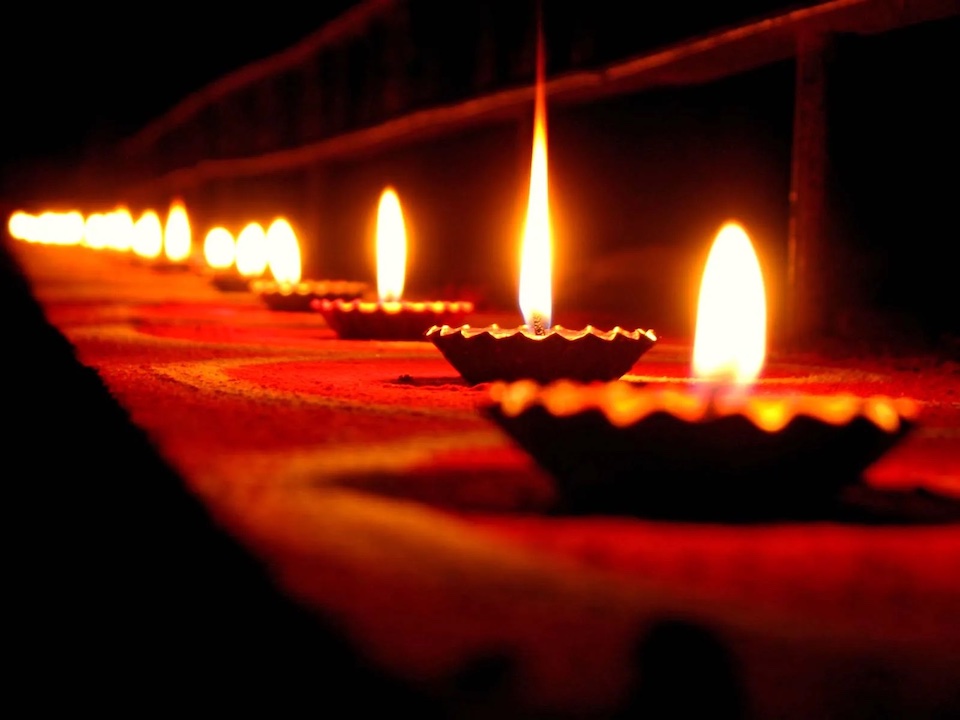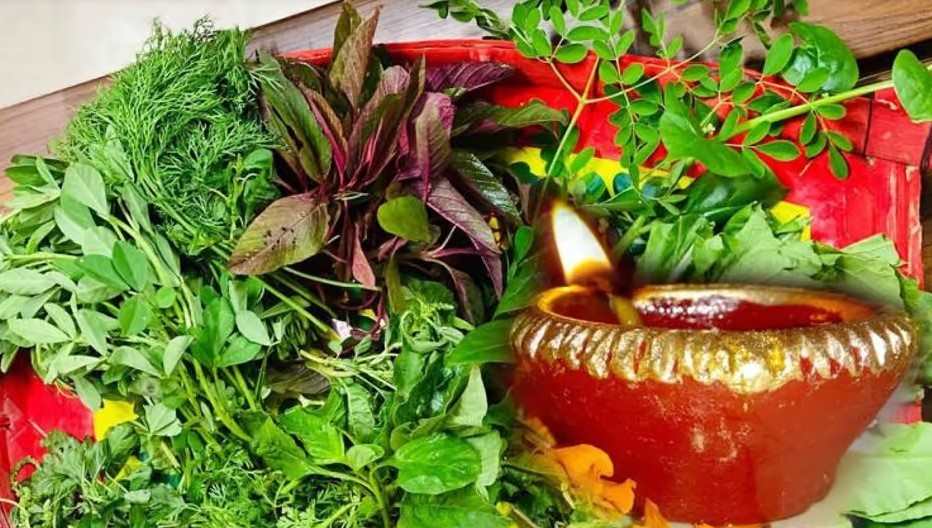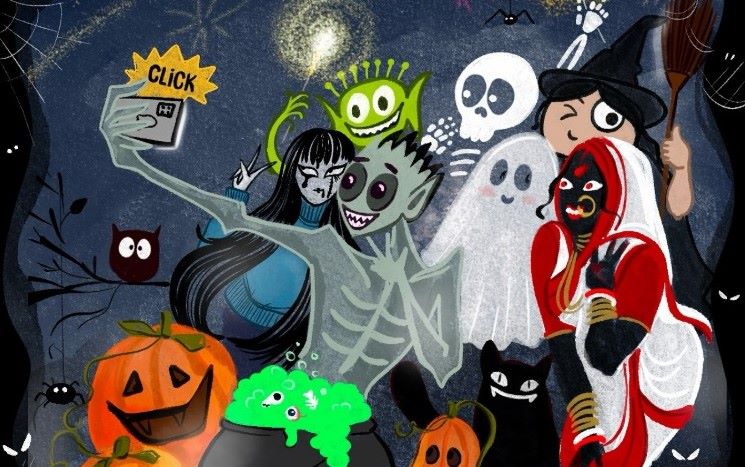While the entire world celebrates Halloween, Bengalis have their own Halloween- known as “Bhoot Chaturdashi” which is celebrated just a say before Diwali. This year Bhoot Chaturdashi falls on Sunday, October 19. Bhoot Chaturdashi highlights the balance between honouring the ancestors and safeguarding the living from negative forces.
Bhoot Chaturdashi is a Bengali festival, often called “India’s Halloween” or “Bengali Halloween” that marks the fourteenth day of the lunar fortnight before Diwali. Bengalis across the world observe this night by lighting 14 lamps to honour ancestors and ward off evil spirits. On this day, 14 types of leafy vegetables (called choddo shaak in Bengali) to cleanse the body.
The name Bhoot Chaturdashi combines “Bhoot” (ghost or spirit) and “Chaturdashi” (fourteenth day).
Why is Bhoot Chaturdashi significant for Bengalis?
The festival of Bhoot Chaturdashi holds immense significance for Bengali families. A day before Diwali, Naraka Chaturdashi is celebrated across India, which according to Hindu scriptures is the day when Lord Krishna killed demon Narakasura.
In West Bengal, that day is celebrated as Bhoot Chaturdashi. It is observed one day before Diwali, which is October 19 this year. Also called Kali Chaudas, the day is dedicated to honouring Goddess Kali and driving away evil spirits and negative energies through various rituals.
On Bhoot Chaturdashi, people also honour their ancestors in a unique tradition, which is why it is called Bengal’s version of Halloween. The celebrations for the Bengali community focus on two main rituals involving 14 items: lighting lamps and eating leafy greens.
Lighting up 14 lamps/diyas (Choddo Prodip)

In the evening, after sunset, 14 earthen lamps are lit and placed in different corners of the home to guide ancestral spirits and ward off negative forces. It is believed that the souls of 14 generations of ancestors visit their descendants on this night. The lamps illuminate their path, welcoming them to the family home. The lights are also meant to drive away malevolent spirits that are thought to be more active at this time, particularly on the darkest night before the new moon.
The lamps are placed in strategic locations throughout the house, such as doorways, darkened corners, windowsills, and near the sacred Tulsi plant.
Consuming 14 kinds of leafy greens

In Bengal, consuming a dish of 14 leafy greens, known as Choddo Shaak, on Bhoot Chaturdashi is a traditional ritual with spiritual and health-related significance. The practice is linked to honouring ancestors, protecting against negative forces, and boosting immunity for the upcoming winter.
Bhoot Chaturdashi falls on the 14th lunar day before Kali Puja, and it is believed that the spirits of 14 generations of ancestors visit their homes on this night. The act of consuming 14 types of saag is done in parallel with lighting 14 earthen lamps (choddo prodeep) to honour and guide the ancestral spirits.
The ritual is also a protective measure against malevolent spirits believed to be wandering freely on this night. The 14 types of greens are believed to have cleansing and protective qualities that purify the body and ward off evil energies.
Some accounts suggest the tradition originated from the practice of the Shaakdwipi Brahmins, who worshipped the goddess Shakhambhari by offering 14 types of greens.
Long or Short, get news the way you like. No ads. No redirections. Download Newspin and Stay Alert, The CSR Journal Mobile app, for fast, crisp, clean updates!
App Store – https://apps.apple.com/in/app/newspin/id6746449540
Google Play Store – https://play.google.com/store/apps/details?id=com.inventifweb.newspin&pcampaignid=web_share


